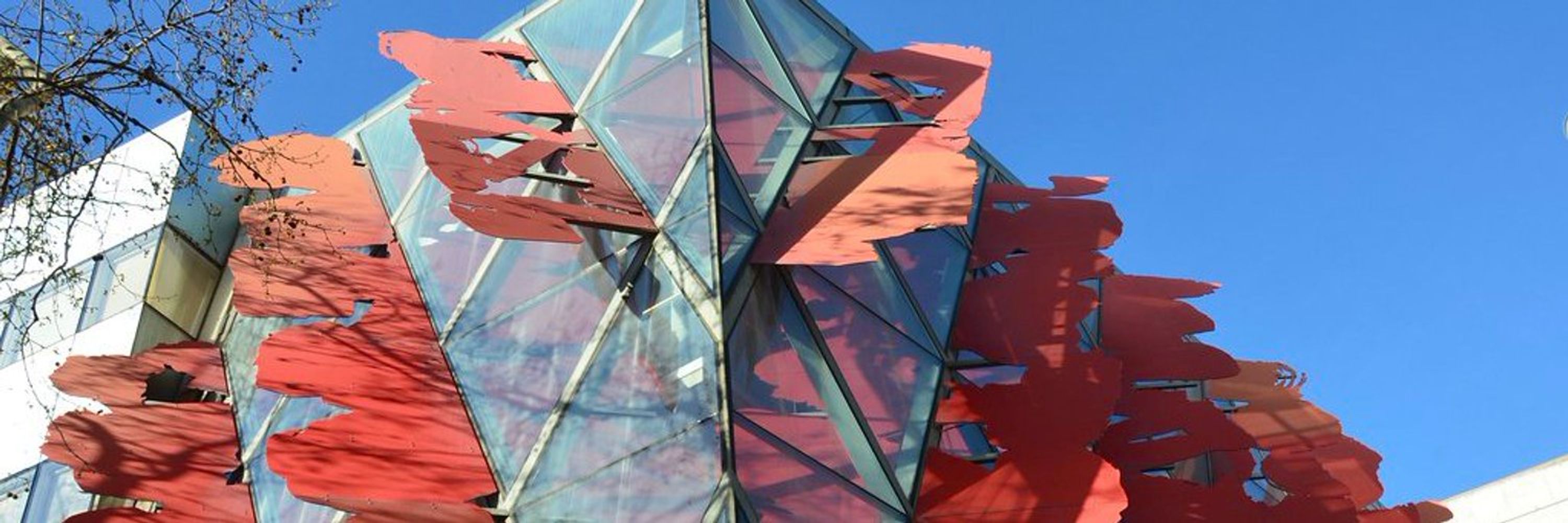
Rubén Moreno-Bote
@morenobote.bsky.social
Bluesky in Barcelona
Computational Neuroscience & Natural and Artificial Intelligence
Serra Hunter Professor
Center for Brain and Cognition, Universitat Pompeu Fabra
https://sites.google.com/view/morenobotecompneuro?pli=1
Computational Neuroscience & Natural and Artificial Intelligence
Serra Hunter Professor
Center for Brain and Cognition, Universitat Pompeu Fabra
https://sites.google.com/view/morenobotecompneuro?pli=1
Relevant papers:
www.nature.com/articles/s41...
openreview.net/forum?id=OcH...
openreview.net/forum?id=Sze...
www.nature.com/articles/s41...
openreview.net/forum?id=OcH...
openreview.net/forum?id=Sze...

Complex behavior from intrinsic motivation to occupy future action-state path space - Nature Communications
Intelligent behavior of artificial agents and their design are usually considered as a reward maximization phenomenon, however, the reward function construction may be challenging. The authors introdu...
www.nature.com
September 12, 2025 at 11:24 AM
I would not use any extrinsic reward function. Instead, I would use an intrinsic motivation.
June 3, 2025 at 6:21 AM
I would not use any extrinsic reward function. Instead, I would use an intrinsic motivation.
Nice problem. If you had a perfect replica, then the answer is yes. But if you miss a single data point, then there will be divergence between predictions and reality. The only way to fill in the gap is to have a model of behavior, adding embodiment and a reason for the brain to exist.
May 7, 2025 at 6:08 AM
Nice problem. If you had a perfect replica, then the answer is yes. But if you miss a single data point, then there will be divergence between predictions and reality. The only way to fill in the gap is to have a model of behavior, adding embodiment and a reason for the brain to exist.
This position has already been filled. Thanks to all the applicants for making my choice tough.
March 5, 2025 at 2:11 PM
This position has already been filled. Thanks to all the applicants for making my choice tough.
You can find relevant papers here
nature.com/articles/s41...
nature.com/articles/s41...
openreview.net/forum?id=yXW...
nature.com/articles/s41...
nature.com/articles/s41...
openreview.net/forum?id=yXW...

Complex behavior from intrinsic motivation to occupy future action-state path space - Nature Communications
Intelligent behavior of artificial agents and their design are usually considered as a reward maximization phenomenon, however, the reward function construction may be challenging. The authors introdu...
nature.com
March 5, 2025 at 2:09 PM
You can find relevant papers here
nature.com/articles/s41...
nature.com/articles/s41...
openreview.net/forum?id=yXW...
nature.com/articles/s41...
nature.com/articles/s41...
openreview.net/forum?id=yXW...
You can find relevant papers here
nature.com/articles/s41...
nature.com/articles/s41...
openreview.net/forum?id=yXW...
nature.com/articles/s41...
nature.com/articles/s41...
openreview.net/forum?id=yXW...
www.nature.com
March 5, 2025 at 2:07 PM
You can find relevant papers here
nature.com/articles/s41...
nature.com/articles/s41...
openreview.net/forum?id=yXW...
nature.com/articles/s41...
nature.com/articles/s41...
openreview.net/forum?id=yXW...
You can find relevant papers here
www.nature.com/articles/s41...
www.nature.com/articles/s41...
openreview.net/forum?id=yXW...
openreview.net/forum?id=mZH...
www.nature.com/articles/s41...
www.nature.com/articles/s41...
openreview.net/forum?id=yXW...
openreview.net/forum?id=mZH...

Complex behavior from intrinsic motivation to occupy future action-state path space - Nature Communications
Intelligent behavior of artificial agents and their design are usually considered as a reward maximization phenomenon, however, the reward function construction may be challenging. The authors introdu...
www.nature.com
December 8, 2024 at 7:22 PM
You can find relevant papers here
www.nature.com/articles/s41...
www.nature.com/articles/s41...
openreview.net/forum?id=yXW...
openreview.net/forum?id=mZH...
www.nature.com/articles/s41...
www.nature.com/articles/s41...
openreview.net/forum?id=yXW...
openreview.net/forum?id=mZH...
Reposted by Rubén Moreno-Bote
Would be great to be added. Thanks! Credentials: scholar.google.com/citations?us...
December 5, 2024 at 8:05 AM
Would be great to be added. Thanks! Credentials: scholar.google.com/citations?us...
Reposted by Rubén Moreno-Bote
Sure! Eg, here is my latest with Brent Doiron and others using linear response theory in circuits with multiple inhibitory subtypes: elifesciences.org/reviewed-pre...
December 5, 2024 at 9:05 AM
Sure! Eg, here is my latest with Brent Doiron and others using linear response theory in circuits with multiple inhibitory subtypes: elifesciences.org/reviewed-pre...
Dear Christoph, can you send me your most representative purely-theory paper, to be posted as well?
December 5, 2024 at 7:21 AM
Dear Christoph, can you send me your most representative purely-theory paper, to be posted as well?
Reposted by Rubén Moreno-Bote
In the lab we have been working on this
www.nature.com/articles/s41...
In the cat-mouse example, you can see how goal-directed behavior is built on the fly, and transitions are observed between goals. Still we did not characterize the complexity of behavioral transitions, yet to be done.
www.nature.com/articles/s41...
In the cat-mouse example, you can see how goal-directed behavior is built on the fly, and transitions are observed between goals. Still we did not characterize the complexity of behavioral transitions, yet to be done.

Complex behavior from intrinsic motivation to occupy future action-state path space - Nature Communications
Intelligent behavior of artificial agents and their design are usually considered as a reward maximization phenomenon, however, the reward function construction may be challenging. The authors introdu...
www.nature.com
December 4, 2024 at 11:25 AM
In the lab we have been working on this
www.nature.com/articles/s41...
In the cat-mouse example, you can see how goal-directed behavior is built on the fly, and transitions are observed between goals. Still we did not characterize the complexity of behavioral transitions, yet to be done.
www.nature.com/articles/s41...
In the cat-mouse example, you can see how goal-directed behavior is built on the fly, and transitions are observed between goals. Still we did not characterize the complexity of behavioral transitions, yet to be done.


